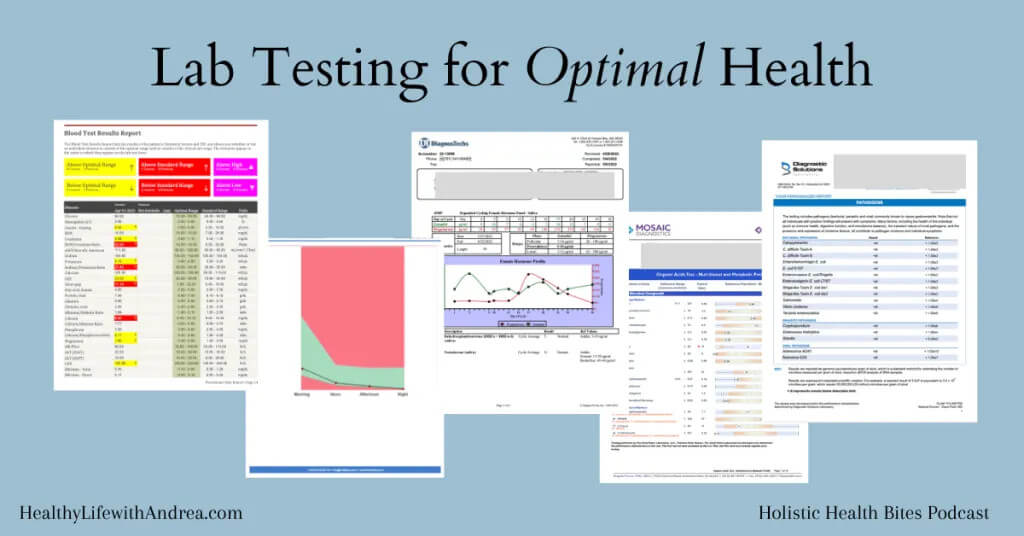
The Power of Functional Lab Testing
Today, we’re going to delve into the world of functional lab testing – what it is, why it matters, and how it differs from conventional lab testing.
Conventional vs Functional Labs
To start, let’s talk about what differentiates functional lab testing from conventional lab testing. Both of these tools have their merits, but they are used for different purposes.
Conventional lab tests typically look for a disease state, something that can be diagnosed and treated with a prescription or procedure. They’re excellent when it comes to diagnosing severe or chronic conditions, but they may not pick up on more subtle changes happening in your body or even a condition in the early stages of development.
On the other hand, functional lab testing takes a broader perspective. It assesses how well your body is working on a day-to-day basis and aims to catch potential issues before they become a more significant problem. This is not to say that functional testing couldn’t also identify a chronic or serious condition – they absolutely can, but these tests are often of the best value in catching things before it becomes a serious condition.
Reference vs Optimal Ranges
A key difference lies in the interpretation of results. In functional lab testing, we’re interested in optimal ranges rather than reference ranges. Reference ranges are created by either assessing the averages of the population being tested or by consensus of medical professionals who run these tests. This means that healthy and unhealthy people are included – though mostly unhealthy people as they make up the majority of people being tested. Most of us aren’t undergoing random testing, but rather get tested because something is wrong.
The optimal ranges are narrower and are derived from the healthiest segment of the population. In functional medicine, an optimal range is the goal. It’s where individuals generally experience the best health and least risk of chronic disease.
For instance, if we consider something like Vitamin D levels, the reference range might be 30-100 ng/mL, but an optimal range might be 50-80 ng/mL because studies show that this is the level where most people experience the best health outcomes.
So, optimal ranges provide a more stringent and health-focused goal than reference ranges. They aim for optimal health and wellness, not just the absence of disease.
Types of Functional Lab Tests
Now, let’s talk about the types of tests we use in functional lab testing.
Firstly, there’s the Comprehensive Blood Chemistry panel. This is similar, yet often completely different from conventional lab testing. Functional blood chemistry is a much deeper dive into your overall health, including markers for organ function, nutrient status, immune response, inflammation, blood sugar handling, insulin resistance, digestion, hormones and so much more. This would again be where we would use optimal ranges instead of reference ranges. I run a blood chemistry panel on all of my clients these days so we can fully assess what is going on that the client may not even know about.
Second we have Functional Stool Testing. Not the most glamorous topic, I know, but incredibly informative! This type of test can provide insights into your digestion, absorption, gut microbes, and even immune function. Conventional medicine providers do also have stool tests, but they are often very limited in scope, only looking for a handful of pathogens that can cause obvious acute symptoms like diarrhea.
Third is the Urinary Organic Acids test. This is a metabolic test that can tell us a lot about your nutrient status, gut health, detoxification capacity, neurotransmitters, and overall metabolic health. It’s like getting a snapshot of your body’s metabolic processes in one simple urine collection.
And the final type of test I’ll discuss today is Hormone Testing. In the functional world, this is usually done through urinary or salivary panels. These tests can be used to assess your adrenal health and/or sex hormone balance. It can be a game-changer for understanding hormonal issues, adrenal fatigue, fertility problems and even bone loss.
Insurance
You might be wondering why these tests aren’t typically covered by insurance. The main reason is that insurance companies usually cover tests used to diagnose disease, not tests used to assess overall function or wellness. It’s a little backward, I know, but that’s the state of our healthcare system. I don’t know about you, but I’d much rather NOT progress to the stage where I can be diagnosed with something if I can catch it early enough to stop it and reverse course! This is my ultimate goal for myself and my clients.
Working with a functional health practitioner, like myself, gives you a comprehensive understanding of these tests. We dive deep into the results, not just looking for disease, but looking for dysfunctions and imbalances that could lead to disease down the line. I don’t run all of these tests on every single client, but make my recommendations based on the client’s presentation, existing diagnoses, current symptoms or issues, and their goals. We discuss these results in detail. You can’t do that in a 7 minute doctor visit. We often take 30, 60, or even 90 minutes to go over your results so you’ll know exactly what they mean and what to do about them.
Knowledge is power. The more you know about your body, the better equipped you are to make informed decisions about your health.
I hope this has given you some insight into the world of functional lab testing. As always, I’m here to help you navigate your health journey, so feel free to schedule a complimentary Holistic Health Strategy Session with me to discuss any questions you have.




















0 Comments